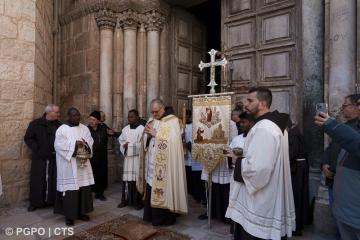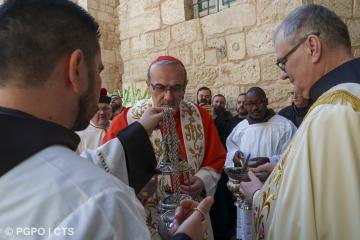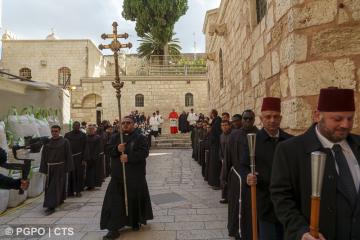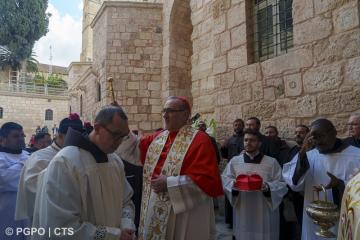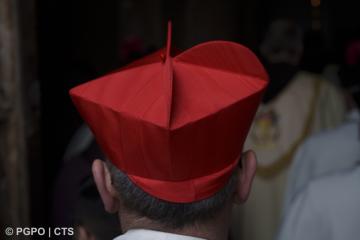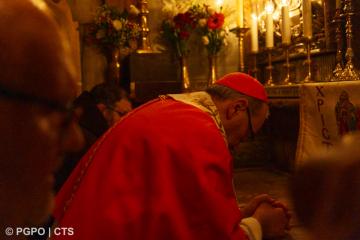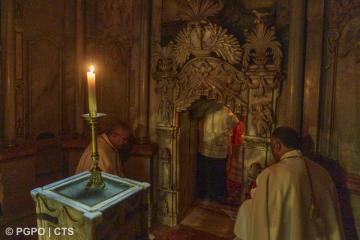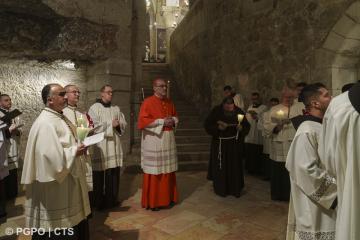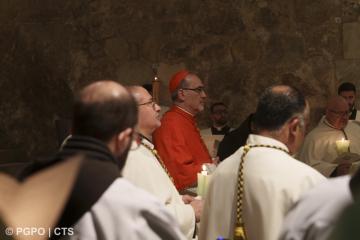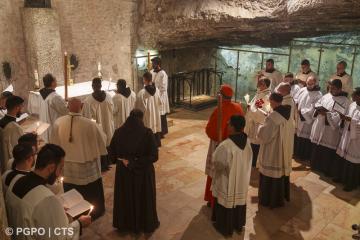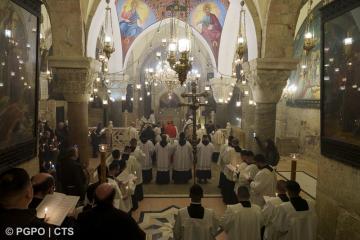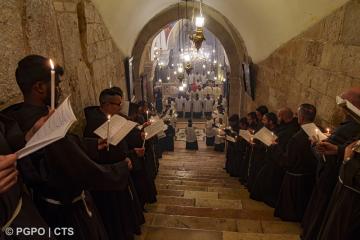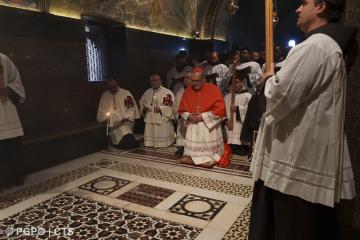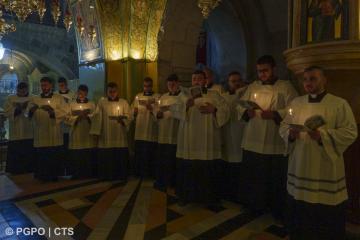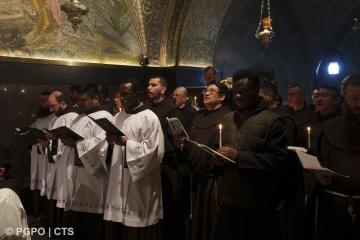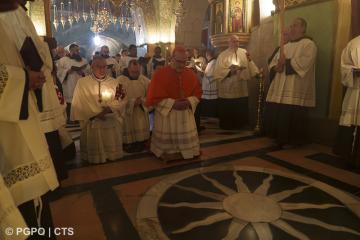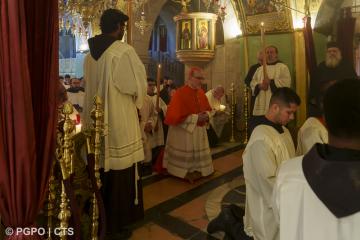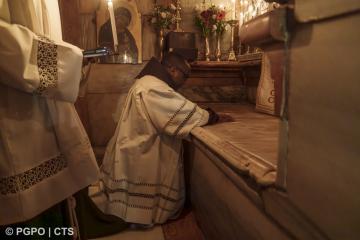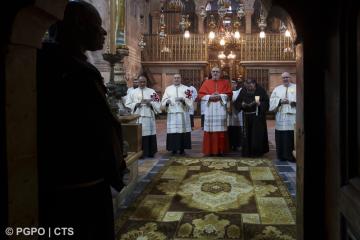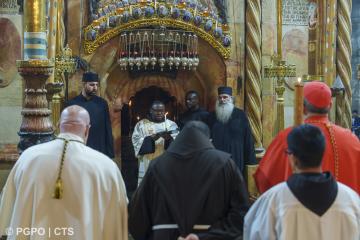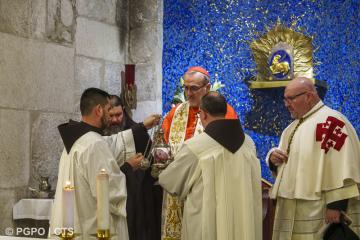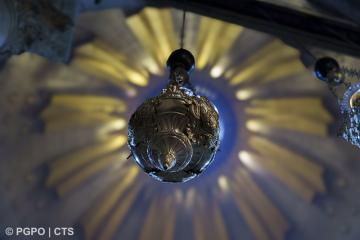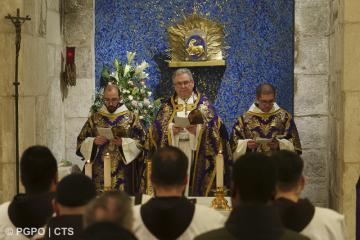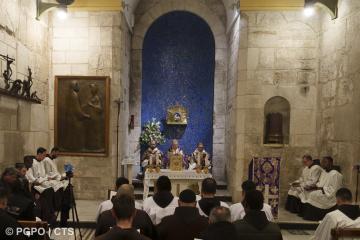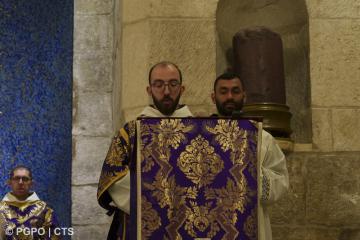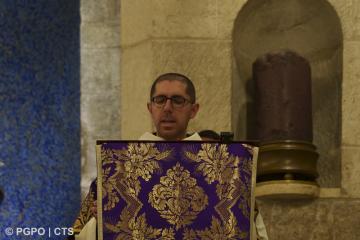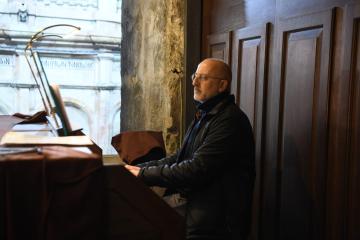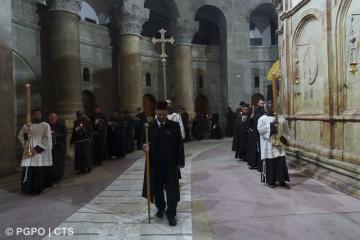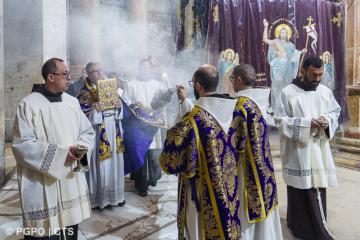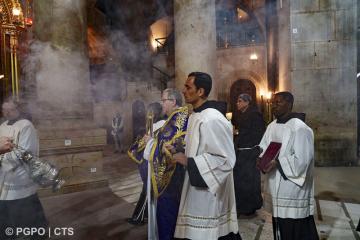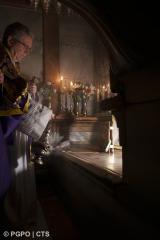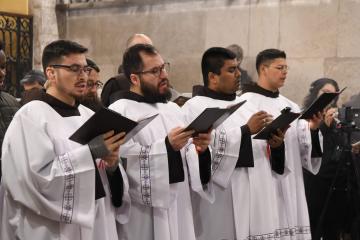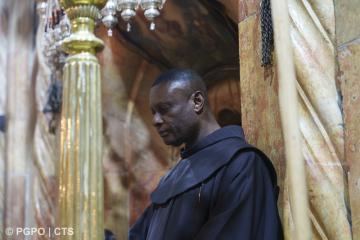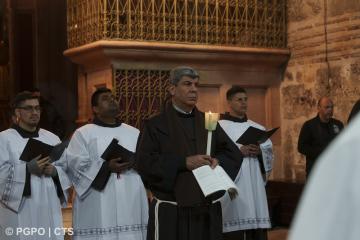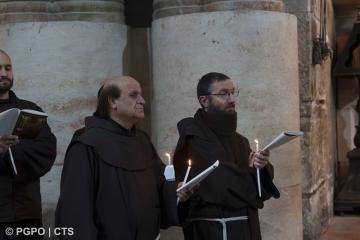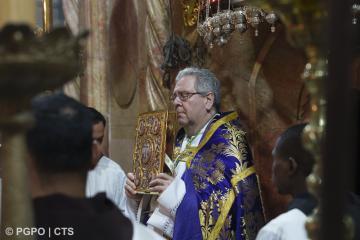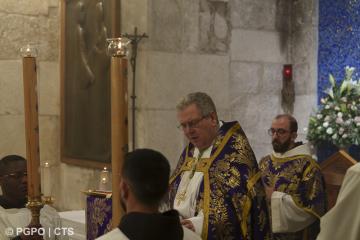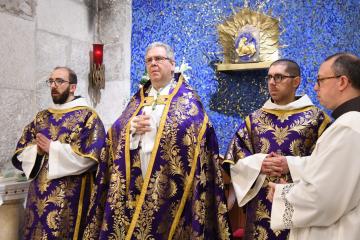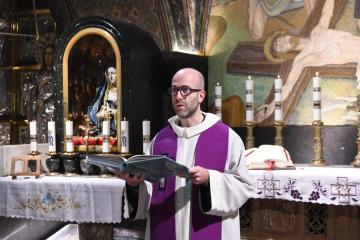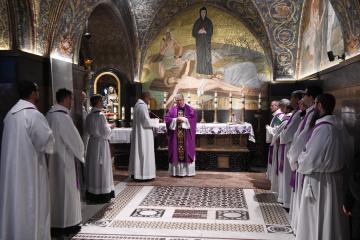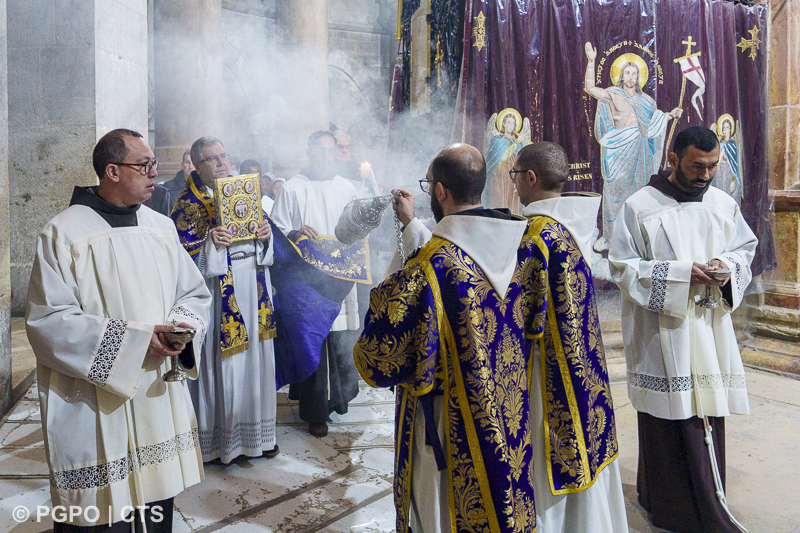
The solemn celebrations of the vigil and of the first Sunday in Lent in the Holy Sepulchre, came to an end through a number of peculiar and unique rites and liturgies that mark the time of preparation for Easter in this special place.
As established by the Status Quo, in the night between Saturday and Sunday of Lent, the Franciscan friars of the Custody of the Holy Land animate the first solemn entrance of the Latin Patriarch into the Basilica, followed by the daily procession, the night vigil and the celebration of Holy Mass.
The solemn entrance of the Latin Patriarch
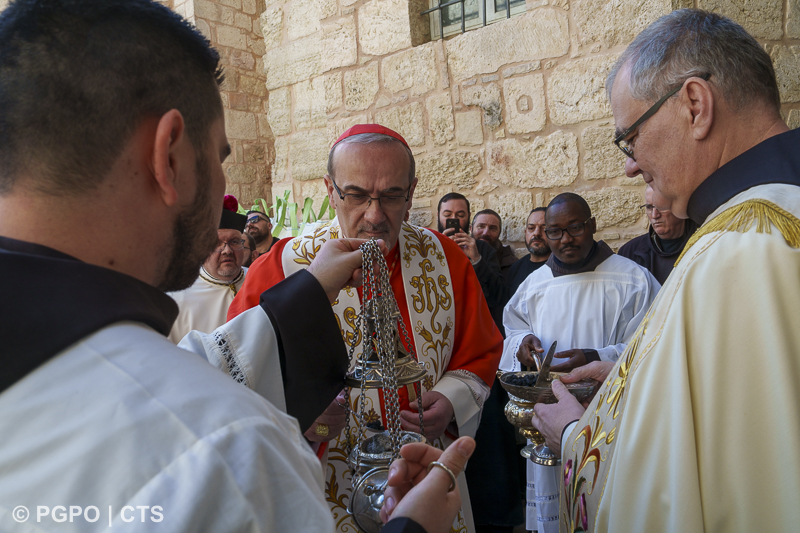
In the afternoon of Saturday 17 October, the Patriarch of Jerusalem of the Latins, H.B. Cardinal Pierbattista Pizzaballa, accompanied by the Franciscans, solemnly entered the Holy Sepulchre. This year, due to the work being done on the floor of the Basilica, the President of the Holy Sepulchre, Fra Stéphane Milovitch, did not welcome the Patriarch at the Stone of Unction, but on the esplanade in front of the Basilica.
After the entrance, there was the solemn sung procession, which from the chapel of the Apparition of the Risen followed the traditional itinerary that the Franciscans have taken every day in the Basilica since way back in 1336.
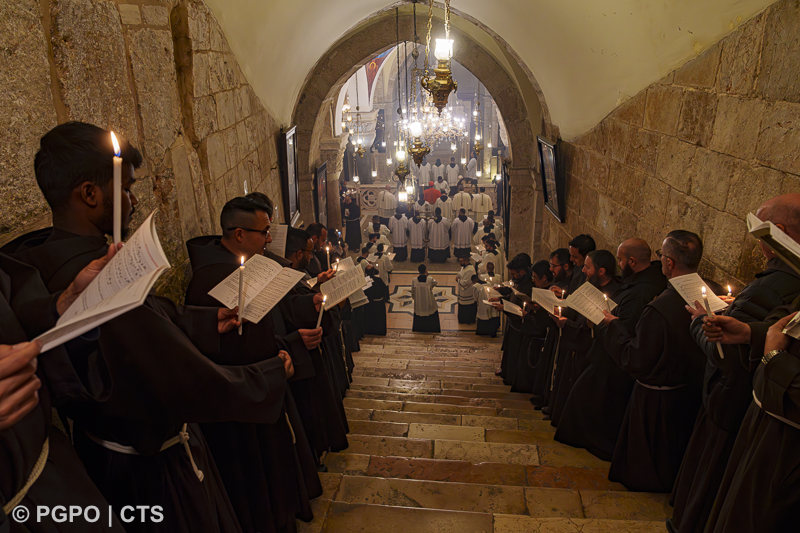
The procession starts in the chapel of the Blessed Sacrament (also known as the “Apparition to Mary”) and ends in the same chapel, after a long circular journey through the whole of the Basilica. Like the Via Crucis, it is made up of 14 stations: but its peculiarity lies in the fact that the stations in the Basilica cover the route of the Passion of Christ culminating in the historical places of his crucifixion, burial, Resurrection and apparitions to Mary Magdalene and to His Mother. On the passage into the Tomb, the place of the resurrection is adored with three walking times around the Holy Edicule.
Office of the Readings and vigil celebrations
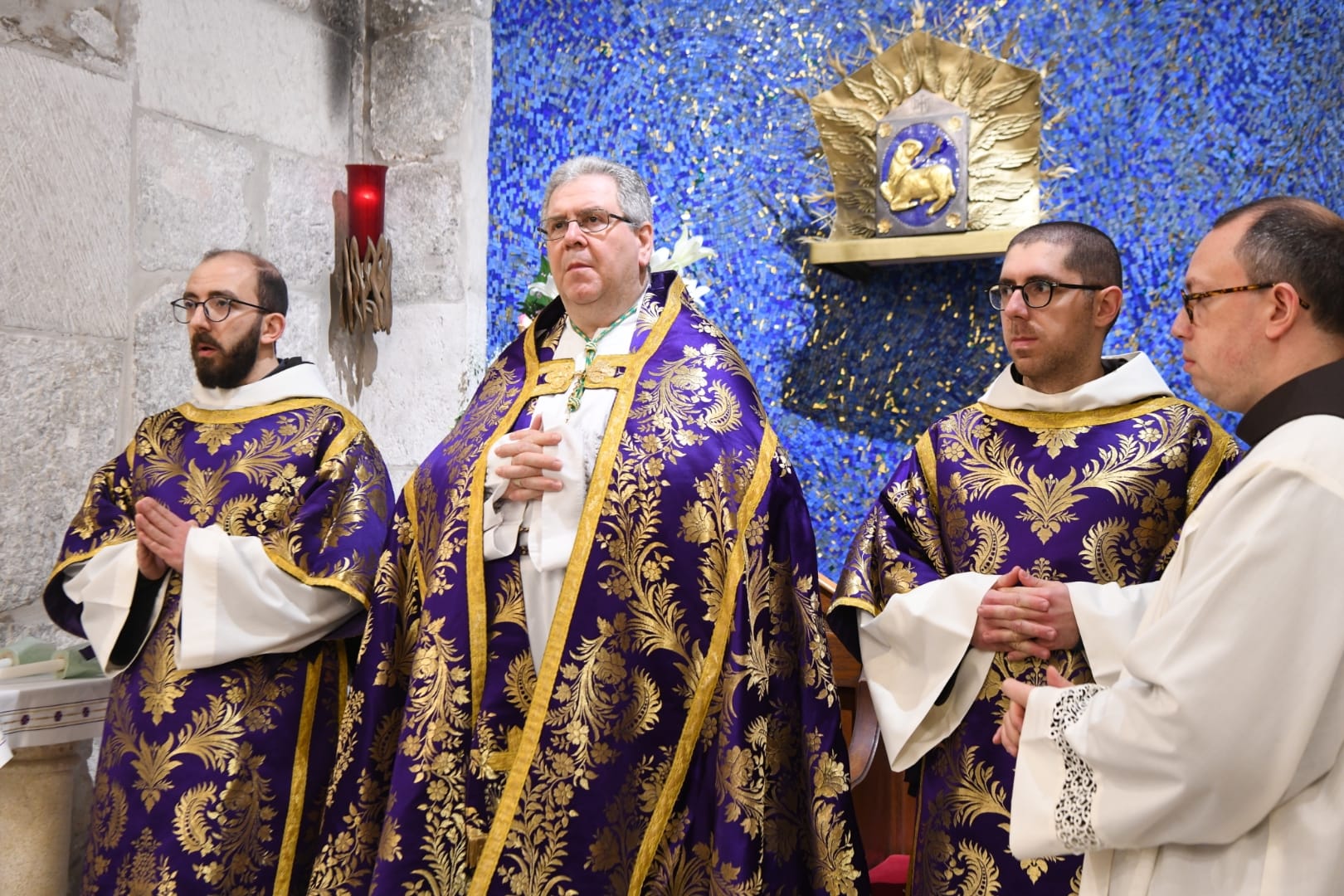
The celebrations continued with the celebration of matins: in the night, the Franciscans gathered in the Holy Sepulchre for the solemn Office of the Readings and the Vigil Mass presided over by the Custos of the Holy Land, Fr. Francesco Patton. This is a tradition which has been repeated since at least 1754 on the Sundays of Lent, from the first one to Palm Sunday.
In the Chapel of the Apparition, the Office of the Readings is celebrated with the three canticles of the Old Testament, where the Easter character of the vigil celebration, which has as its climax the proclamation of the Gospel of the Resurrection, is highlighted.
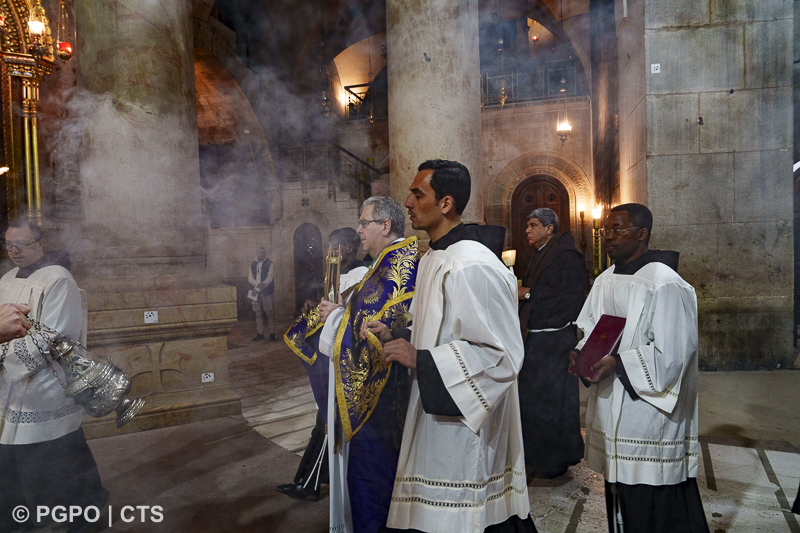
A particularity of this special vigil liturgy is that during the procession around the empty tomb, the Benedictus is sung, with the antiphon in Latin “The Lord’s Angel came down from heaven: and he rolled away the stone and sat on it,” followed by the Hallelujah. It is always Easter in the place of the Resurrection of Jesus; this is why it was possible to sing the “Hallelujah” during Lent. It is a joy and a privilege shared by all the Churches in the Holy Sepulchre, where the importance of the place dominates over the liturgical time of reference.
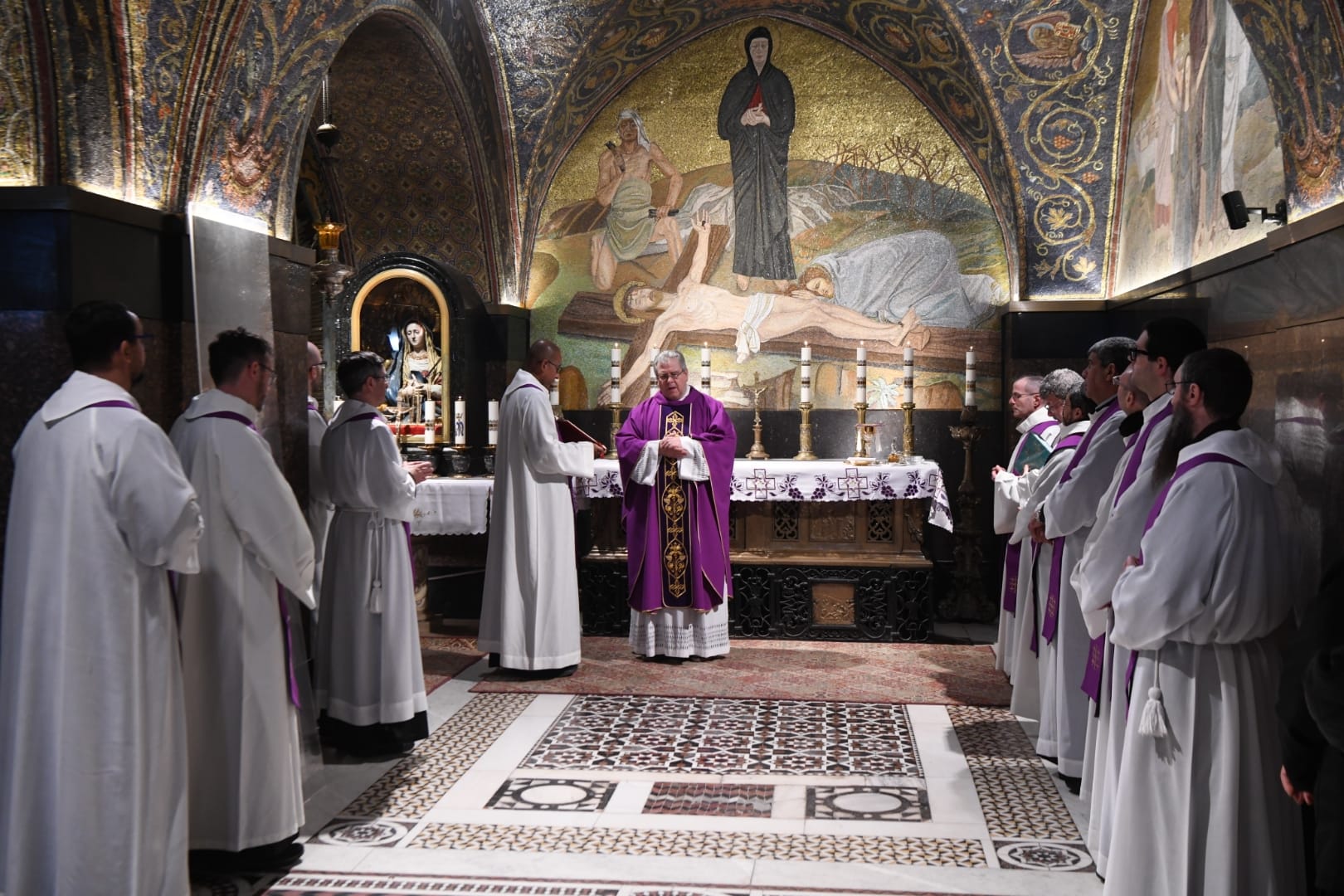
At the end of the Office of the Readings, the Father Custos celebrated Sunday Mass in the Chapel of the Crucifixion, on Calvary. The Gospel, which narrated the episode of the temptations of Jesus in the desert, inspired the words of the homily of Fr. Francesco: “Jesus experiences temptation: the evangelist Mark reminds us that temptation is a very serious dimension because it is something that the Lord himself experiences. However, the first Sunday of Lent also orients us towards Easter, towards the great vigil of the renewal of baptismal promises. The readings of the Old and New Testaments speak of the flood and of water: in antiquity these images indicate the death of a world of sinners, whereas in the Christian and Easter perspective, they mean the death of the world of sin. God chooses to no longer destroy humanity but to destroy sin. This is also the meaning of that ritual at the beginning of our Christian lives, baptism: so let us walk confidently into those forty days towards Easter so that we can renew our baptismal promises.”
Silvia Giuliano
Scarica qui la brochure del Santo Sepolcro / Descargue aquí el folleto del Santo Sepulcro / Download the Holy Sepulchre brochure here / Télécharger la brochure du Saint-Sépulcre ici / Descarregar a brochura do Santo Sepulcro aqui


